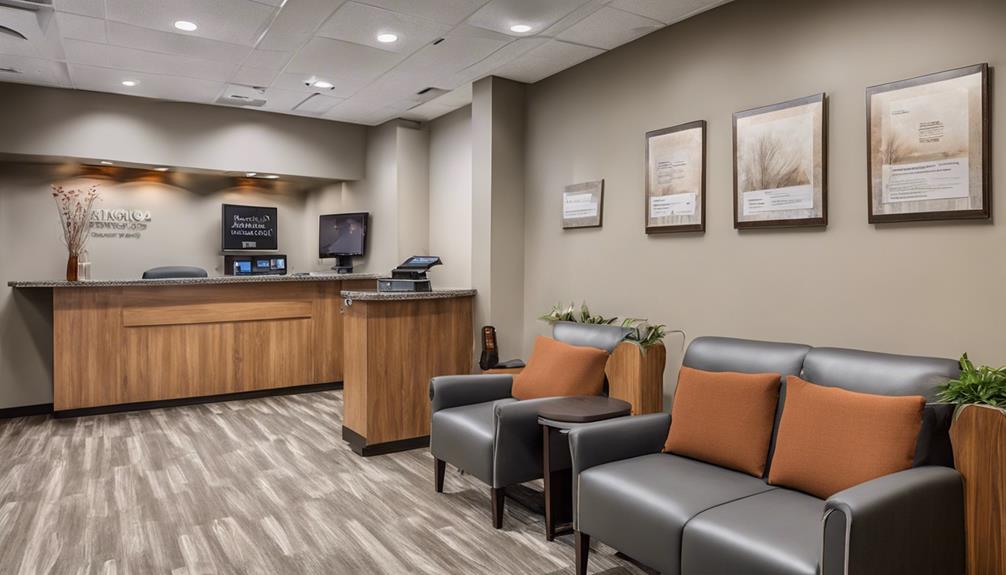Although many people think that hearing loss is a common occurrence as we get older, the truth is that modern hearing aids are transforming lives in incredible ways.
From cutting-edge hearing aid technology to revolutionary cochlear implant advancements, the field of audiology is experiencing groundbreaking developments that are improving the lives of individuals with hearing impairments.
By exploring the latest advancements in speech-to-text glasses innovation, crowd noise filtering app development, and regenerative drug therapy breakthroughs, we uncover a world where technology is not just assisting but truly transforming the way people interact with sound.
Key Takeaways
- Bluetooth connectivity and AI in hearing aids enhance personalization.
- Cochlear implants offer direct audio streaming and advanced features.
- Speech-to-text glasses provide real-time subtitles and transcription software.
- Regenerative drug therapy shows promise in restoring damaged cells for hearing loss.
Cutting-Edge Hearing Aid Technology
As we delve into the realm of Cutting-Edge Hearing Aid Technology, we're introduced to a world where innovative advancements revolutionize the way individuals experience sound and enhance their quality of life. The line between hearing aids and cutting-edge technology has blurred, offering solutions that not only aid in hearing loss but also help people stay connected and engaged in various activities. With Bluetooth connectivity, these aids allow for direct audio streaming from digital devices, ensuring seamless integration into daily life. Features like GPS tracking not only prevent loss but also enhance usability, providing a sense of security for users.
Moreover, the incorporation of AI in hearing aids enables personalized adjustments, leading to optimal performance tailored to individual needs. This not only improves sound quality but also ensures comfort and effectiveness. Additionally, advancements in battery life offer all-day usage on a single charge, promoting convenience and uninterrupted support for those with hearing difficulties. The integration of health monitoring capabilities further contributes to overall well-being by tracking physical activity and cognitive health. Innovative hearing solutions are truly transforming the way we perceive and interact with the world around us.
Revolutionary Cochlear Implants Advancements

With wireless connectivity enhancing communication capabilities, cochlear implants have undergone revolutionary advancements in improving sound quality and connectivity for users. These advancements haven't only transformed the way individuals with hearing loss experience sound but have also opened up new possibilities for improved communication and accessibility.
Here are some key points highlighting the latest developments in cochlear implants:
- Direct Audio Streaming: Cochlear implants now support direct audio streaming, allowing users to seamlessly connect to various audio sources without the need for additional accessories.
- Bluetooth Technology: The integration of Bluetooth technology in cochlear implants reduces interference and ensures clearer sound quality, enhancing the overall listening experience.
- Advanced Features: Modern cochlear implants come equipped with advanced features that cater to different listening environments, providing users with greater comfort and convenience.
- Improved User Experience: These advancements in sound quality and connectivity not only enhance the user experience but also promote better integration with digital devices, making daily activities more accessible and enjoyable.
Speech-to-Text Glasses Innovation
Our exploration into innovative hearing solutions continues with a remarkable development in the realm of auditory assistance – the groundbreaking Speech-to-Text Glasses Innovation. Smart glasses embedded with real-time speech-to-subtitles technology leverage augmented reality to display subtitles directly on the lenses, revolutionizing communication for individuals with hearing loss. Vuzix has already introduced smart glasses equipped with transcription software, a step towards enhancing accessibility and inclusivity. In the next few years, we anticipate the widespread availability of affordable eyewear featuring automatic captions, further bridging the gap in effective communication. This innovative speech-to-subtitles technology represents a significant advancement in communication enhancement, offering a practical solution to improve interactions for those with hearing impairments. By integrating cutting-edge features into everyday eyewear, these smart glasses are paving the way for a more inclusive and connected world.
| Key Points | Description |
|---|---|
| Real-time subtitles | Augmented reality technology displaying subtitles on smart glasses |
| Transcription software | Vuzix smart glasses incorporating software for individuals with hearing loss |
| Automatic captions | Future affordable eyewear expected to have automatic captioning features |
| Communication enhancement | Speech-to-subtitles technology providing innovative solutions for hearing loss |
Crowd Noise Filtering App Development

Developers are creating a Crowd Noise Filtering App to enhance the listening experience of individuals with hearing impairments by isolating speech in crowded environments using AI technology. This innovative app employs de-noising algorithms to improve conversation understanding in noisy settings. Anticipated advancements in powerful de-noising programs within hearing technology over the next five years signal a promising future for communication enhancement in challenging auditory environments. By focusing on technologies that prioritize speech clarity and comprehension for hearing-impaired individuals, this app aims to revolutionize how individuals with hearing loss experience and engage in conversations in noisy situations.
- App for isolating speech in crowded environments uses AI to enhance listening experience for hearing-impaired individuals.
- De-noising algorithms within the app improve conversation understanding in noisy settings.
- Anticipated availability of powerful de-noising programs in hearing technology within the next 5 years.
- Focus on developing technologies that enhance communication in challenging auditory environments.
Regenerative Drug Therapy Breakthroughs
Through regenerative drug therapy breakthroughs, researchers have successfully activated chemical switches to restore damaged cells responsible for hearing, offering hope for individuals affected by various forms of hearing impairments. The potential of regrowing cells that help in hearing holds promise for restoring hearing lost due to damaged hair cells, especially in conditions like age-related hearing loss. Inspired by natural hair cell regrowth in animals like birds and fish, scientists are now focusing on developing hair cell regrowth therapies for humans, with ongoing clinical trials for hereditary or acquired hearing loss. These innovative approaches aim to provide permanent solutions for various hearing impairments by addressing the root cause of cell damage. Below is a table summarizing key aspects of regenerative drug therapy in the context of hearing loss:
| Regenerative Drug Therapy for Hearing Loss | |
|---|---|
| Focus | Restoring damaged cells responsible for hearing |
| Applications | Age-related hearing loss, hereditary/acquired hearing loss |
| Progress | Clinical trials ongoing for hair cell regrowth therapies |
Frequently Asked Questions
What Is the New Technology to Restore Hearing?
We've seen remarkable advances in technology for restoring hearing. Gene therapy replaces mutated genes with healthy ones, regenerative medicine regrows damaged sensory cells in the inner ear, and artificial intelligence in personalized hearing aids enhances sound quality.
Cochlear implants with wireless connectivity improve communication, and ongoing human trials for hair cell regrowth therapies offer hope for the future. These cutting-edge solutions are revolutionizing the way we address hearing loss and transforming lives.
What Innovative Technology or Surgeries Are Helping Our Deaf Patients?
We see the impact of innovative hearing solutions daily. From gene therapy to cochlear implants with Bluetooth connectivity, the advancements in technology and surgeries are truly transforming the lives of our deaf patients.
These cutting-edge options offer hope and improved quality of life. Our team is dedicated to exploring and implementing these groundbreaking techniques to help our patients hear the world in a whole new way.
What Is the Modern Treatment for Hearing Loss?
When it comes to modern treatment for hearing loss, advancements in regenerative medicine, gene therapy, and cochlear implants are revolutionizing the field. Drug therapies are being developed to regrow hearing cells, while clinical trials for hair cell regeneration offer hope for age-related or genetic hearing loss.
Gene therapy shows promise in addressing hereditary hearing impairments.
Advanced cochlear implants with wireless connectivity are enhancing communication and daily activities for users.
What Is the New Technology for the Deaf?
When it comes to new technology for the deaf, advancements are truly remarkable. From speech-to-subtitles in real-time to transcription software on smart glasses, the innovations are changing lives.
Imagine the possibilities of AI isolating speech in noisy environments for better listening experiences. With affordable eyewear featuring automatic captions on the horizon and powerful de-noising programs expected soon, the future looks bright for those with hearing challenges.
Conclusion
In this ever-evolving landscape of hearing solutions, we're witnessing a symphony of innovation harmonizing to create a crescendo of life-changing possibilities.
From cutting-edge hearing aids to revolutionary cochlear implants, the melody of advancements is bringing clarity and hope to those with hearing impairments.
With each breakthrough, we're composing a new era of sound, where individuals can once again experience the world in all its rich and vibrant tones.









